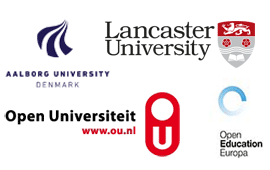

The making of mobilities in online work-learning practices
Terrie Lynn Thompson, University of Stirling
The juxtaposition of new mobilities and web technologies has prompted many social, geographical, economic and political imaginings. However, mobility is a contested and rather slippery concept and it is timely to probe some of the assumptions and rhetoric around current practices and consider implications for networked learning. To study how the infusion of mobile technologies are changing work-learning practices, I use a posthuman framing and draw on sociomaterial theorizing to explore how the everyday work and learning practices of 23 self-employed workers and micro-small business entrepreneurs are changing through the infusion of web and mobile technologies. Data was gathered from interviews as well as journals of online learning activities and learning ecology maps. The workers in this study were entangled with multiple mobile devices in multiple assemblages, often overlapping, and at times conflicting. It seemed that each configuration was enacted in particular locales and times to do particular things. Such arrangements could shift quickly, which is consistent with the provisional nature of digital artefacts. Assemblages that embraced a range of devices seemed to be valued. Wanting fewer devices in the mix was not mentioned.
I use Ingold's notions of becoming and meshwork and Law's work on collateral realities to conduct a micro-analysis that examines hierarchies of mobilities, curation of screens, different flows of mobilities and immobilities, and the re-emergence of ‘place' in work-learning practices. This study suggests that the making of mobilities is a highly fluid and provisional process that asks for a more thoughtful and critical reckoning with the implications of human-technology interactions on practices. I conclude with the significance and implications of these shifts for workers, those managing such material work practices, and educators. This includes contemplation of how new mobilities of networked work-learning practices are often crowdsourced: a more distributed way of problem solving and circulation of knowledge. And, if such professional learning is increasingly unfolding in ways and spaces described as ‘mobile' and characterized by fragmentation, bite-sized learning, distractions, making do, and work arounds, how do educators respond with their networked learning designs? Is it realistic to expect any place-any assemblage of actors-to be a learning space? There is scope to consider new sensibilities for the challenges and possibilities of more mobile and mobilized networked learning.
Keywords
sociomaterial, mobilities, professional learning, meshwork, workspaces, digital devices, online learning
Joint Organising Institutions
| Conference Travel and Accommodation |Doctoral Consortium | Past Conference Proceedings | Contact |